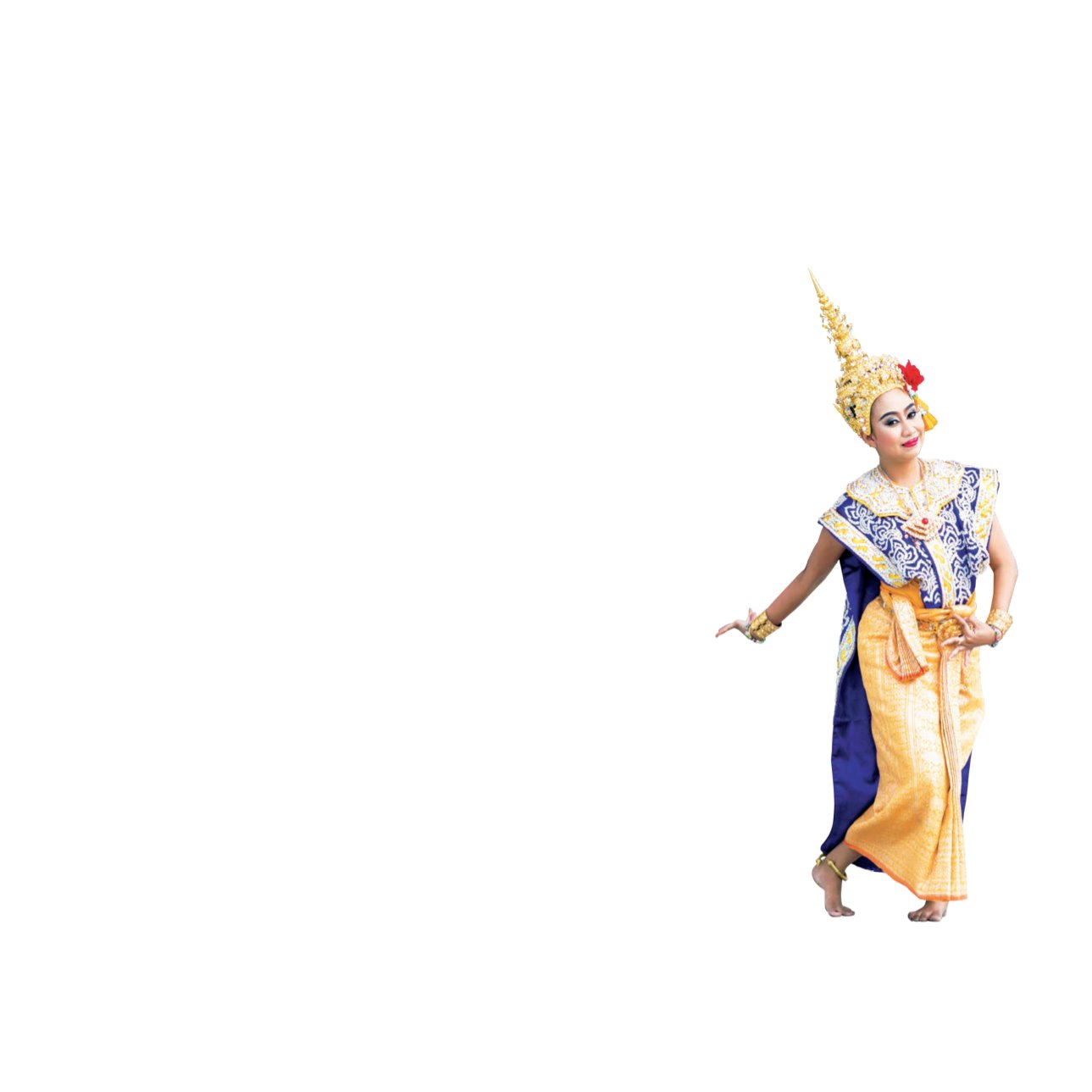

82
|
Culture Ways of Life and Wisdom
Lakhon Chatri
Heritage of Singing and Dancing
Lakhon Chatri is one of the oldest forms of Thai traditional performing arts that link between
the dramatic performances of the Central region and the Nora dance of the Southern region. It is
filled with the beliefs in fortune and holiness which influence the livelihoods and lifestyles of Thai
people.
The origin of the word
“Chatri”
is discussed on several assumptions. For instance,
“Chatri”
may refer to a master of weaponry, who knows the methods of protecting himself from all kinds
of weapons. Or, it could be a slightly different pronunciation of a Sanskrit word
“Kasatriya”
to
“Chattriya”
, and it became further distorted to
“Chatri”
after entering Thailand. This hypothesis is
based on the performance of Lakhon Chatri which presents the story about kings of the costume of
ancient kings. On the other hand, Chatri may be derived from the word
“Yatri”
or
“Yatra”
, which
mean
“to wander”
, in accordance with a mobile troupe in India called
“Chatri”
.
After its widespread popularity in the Southern region, Lakhon Chatri was introduced to
Bangkok in 1769 AD, when King Taksin of Thonburi led the army to suppress the ruler of Nakhon
Si Thammarat and brought several people including the Lakhon Chatri troupes to the capital of
Thonburi. Later in 1780 AD, on the occasion of celebrating the Emerald Buddha Statue, King
Taksin commanded the ruler of Nakhon Si Thammarat’s Lakhon Chatri troupe come to Thonburi
for performance in the royal court. Next in 1832 AD, during King Rama III’s reign, Somdet Chao
Phraya Borom Maha Prayurawongse (Dit Bunnag), then Head of the Royal Treasury, led the army to
suppress an uprising in the Southern region and brought back with him some talented performers
of Lakhon Chatri. Banding as a performing group later, these performers became well received and
the popularity of Lakhon Chatri continues to younger generations until today.
“
Women were permitted to act in general
performances during the reign of King Rama
IV, not only limited to men. Lakhon Chatri
performers changed their dress to the costume
of Lakhon Nok and changed Soet to Chada
because of the slimmer shape and suitability to
a woman’s face that makes her look gorgeous.
”


















